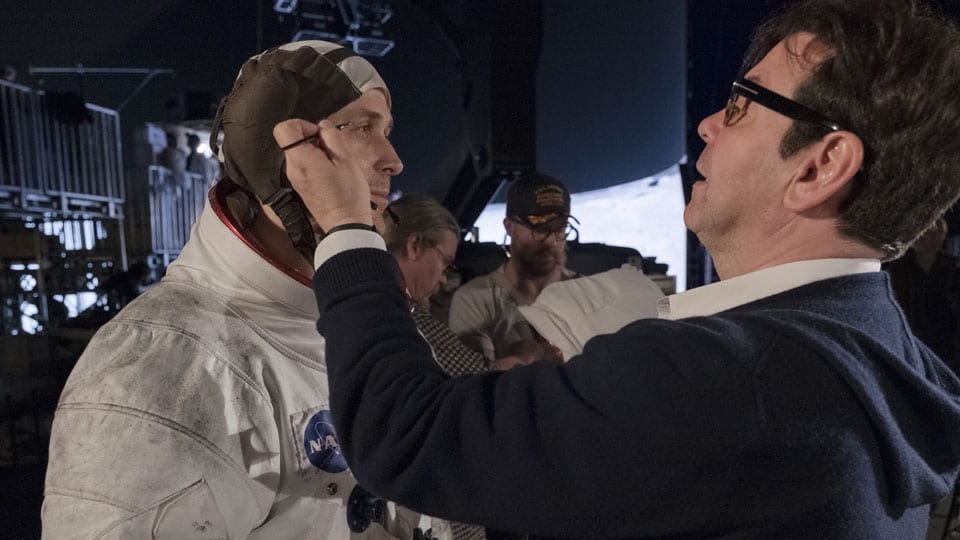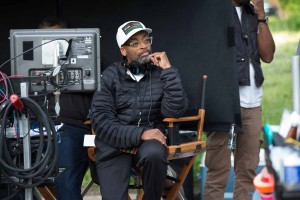
Screenwriter Kevin Willmott came up with the idea of making a contemporary version of the ancient play six years ago, but the filmmakers were unable to get it produced at that time. A year ago, Lee contacted Willmott. They decided to rewrite the script together. Keeping the structure of the play, they incorporated the realities of living on the South Side of Chicago with a special focus on black-on-black crime.
Stylistically directed, the film emulates the original text in more than just plot. As in the play, the script is written in verse. For viewers raised on rap and spoken-word performance, the writers surmised the meter and rhyme of the dialogue would not be hard to grasp. Also, as in classical Greek theater, the most violent events occur off screen. The filmmakers focus on revulsion in the aftermath, rather than elevating the horror of the crime.

The production’s large cast consisted of both professional actors and neighborhood locals. A regular Lee collaborator, Kim Coleman, was casting director. The production conducted a large casting call locally in Chicago mainly for background actors, but a few people ended up in the film. The young Chi-Raq and two young girls that get murdered in the film came out of the casting call.
“I’m always looking. I’ve always needed to confer with a casting director. I know who I want. I need my casting director to show me talent I’ve never heard of. That’s their job,” shared Lee. “I have to be introduced on every film, through every audition process, to people I haven’t heard about. We find people for every film.”
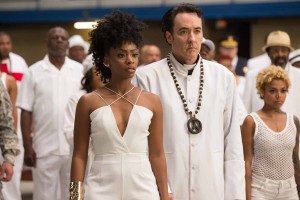 Members of the community cast in the film played a critical part towards the end of the story. Forming a powerful visual tableau, actual women who had lost family to gun violence surround gang-leader Chi-Raq (Nick Cannon), confronting him with the pictures of their deceased loved-ones.
Members of the community cast in the film played a critical part towards the end of the story. Forming a powerful visual tableau, actual women who had lost family to gun violence surround gang-leader Chi-Raq (Nick Cannon), confronting him with the pictures of their deceased loved-ones.
“Those women aren’t from central casting,” revealed Lee. “That’s really them in the film. The pictures are really their sons and daughters. Everybody on the set was crying. It’s so powerful because it’s so real. Those women are never going to be the same, but they came together to draw strength from each other. It doesn’t matter to me what anyone else says about this movie, as long as they are behind me.”
Lee met with his key crew to discuss how each specific department could best contribute in concert to the unified look of the film. “The director has to get the vision, there is the cinematography, the costume designer, the production designer, and that’s what determines the look of the film,” commented Lee.
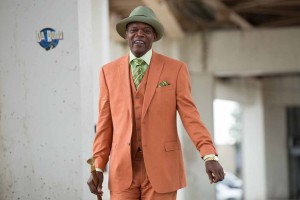 Cinematographer Matthew Libatique has collaborated with Lee on four films. Both filmmakers are from New York. To communicate visual ideas they look at films together and show each other “stuff” in their exchange of ideas. They try to find the same language. Libatique, as well as every crew member, does his best to tell the story.
Cinematographer Matthew Libatique has collaborated with Lee on four films. Both filmmakers are from New York. To communicate visual ideas they look at films together and show each other “stuff” in their exchange of ideas. They try to find the same language. Libatique, as well as every crew member, does his best to tell the story.
“We get along great. We both love sports. We both love great cinema, love directors who can tell a story. Me and Mattie have a very great relationship,” said Lee. “The DP tells the story through the lenses.”
Lee generally does not storyboard. The only time he used that technique was for the war sequences in the Miracle of Saint Anna. The team is well prepared with a shot list when they come to the set, but Lee remains very flexible and open to change the shooting as each scene unfolds.
 “We discussed in pre-production what we are going to do. We have scouts so we know where we’re shooting, which direction we’re going to look, where we’re going to park the trucks. All that stuff is done in pre-production,” explained Lee.
“We discussed in pre-production what we are going to do. We have scouts so we know where we’re shooting, which direction we’re going to look, where we’re going to park the trucks. All that stuff is done in pre-production,” explained Lee.
The film is Lee’s first collaboration with production designer Alex DiGerlando, who had designed Beasts of the Southern Wild. When asked what attracted him to the designer’s work, Lee simply replied, “He’s good!”
The company chose to film in the Englewood area of the city. They incorporated real features of the neighborhood into the production design to create a heightened version of the community, highlighting authentic details such as signage and graffiti. Local artists were hired to paint themed graffiti at the Spartan and Trojan gang hangouts.
An empty storefront in the heart of Englewood became Miss Helen’s bookstore, a homage to the African National Memorial Bookstore in Harlem that was a hub of the 1960s Civil Rights Movement. The location had a beautiful exterior, vintage tin ceilings and a wood floor that the company refinished after the production ripped out the carpeting covering it. Every book on the shelves was individually sourced.
 Lee has worked with costume designer Ruth Carter since 1988, doing 12 films together. She showed a lot of tear sheets to the director to communicate her ideas. The costume design ranges from realistic street wear to much broader stylistic choices. Dolmedes (Samuel Jackson), a wandering street poet who acts in place of the traditional Greek chorus, breaks the fourth wall as he comments on the action throughout the story. He is garbed in big colorful suits that fit his larger-than life persona.
Lee has worked with costume designer Ruth Carter since 1988, doing 12 films together. She showed a lot of tear sheets to the director to communicate her ideas. The costume design ranges from realistic street wear to much broader stylistic choices. Dolmedes (Samuel Jackson), a wandering street poet who acts in place of the traditional Greek chorus, breaks the fourth wall as he comments on the action throughout the story. He is garbed in big colorful suits that fit his larger-than life persona.
Lysistrata (Teyonah Parris), Chi-Raq’s girlfriend who instigates the battle of the sexes, is wardrobed in sexy outfits like the smoking hot woman she is, but her clothing gets tougher as she leads the insurrection. At the armory, Lysistrata’s army of women wears variations of sexy military-inspired garb made from camouflage material complete with boots and ammo belts.
Lee’s editor Barry Brown was unavailable so Ryan Denmark and Hye Mee Na edited Chi-Raq together. Denmark first worked with Lee when he was first assistant editor for Brown on She Hate Me. He assisted on a number of other Lee features before getting his chance to edit. Lee noted that Na has also edited Da Sweet Blood of Jesus and the documentary short, Mo’Ne Davis: I Throw Like a Girl, for him.
The production wrapped July 9 with a release date set for Dec. 4. Because the postproduction process was short, it was important to have two editors on the project from the start of the filming. The editors were on location in Chicago during production. When the company was shooting nights, Lee would work with editorial during the day before the production call. For day shoots, he would visit the cutting room at night after the wrap. The team was also in the edit room on weekends. In that way they kept the editing moving forward so that they were able to make their dates.
As the “final rewrite” the script order and structure was subject to change during the editing process. “The order of scenes and stuff like that always changes, going back and forth,” explained Lee.
Lee emphasized that he doesn’t think of film in acts, or write them in acts. He continued, “I never divide in my mind. This is the first act, now I’m on the second and third. I’ve never done that. I just write the script. I just tell the story.”
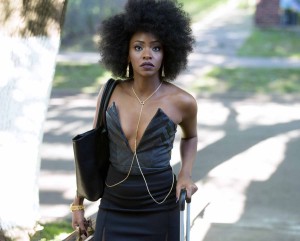 The score by composer Terence Blanchard, and the source music in the film, blended into a cohesive soundtrack. The composer was given the script. He was flown to New Orleans where he was shown scenes from the cut of the film, after which he composed sketches for Lee to listen to and approve. Once the musical ideas were approved, he wrote the complete score. Lee credited musician and composer Howard Drossin, Blanchard’s orchestral arranger, for his work arranging the score.
The score by composer Terence Blanchard, and the source music in the film, blended into a cohesive soundtrack. The composer was given the script. He was flown to New Orleans where he was shown scenes from the cut of the film, after which he composed sketches for Lee to listen to and approve. Once the musical ideas were approved, he wrote the complete score. Lee credited musician and composer Howard Drossin, Blanchard’s orchestral arranger, for his work arranging the score.
In selecting a member of his crew for a special shout-out, Lee chose sound designer, Phil Stockton from C5 Sound in New York, who the director felt had done a great job. Lee worked with the designer on School Daze back in 1988.
Lee said that he likes Stockton’s sound design because, “He takes chances. If I suggest something, he doesn’t say that’s never going to work. We try stuff. We use sound design to help tell the story the same way the DP does what he has to do, the same way the costume designer does what she does. Same with the production designer.”
In concluding Lee stated, “It came together the way Kevin and I envisioned as the co-writers. Everybody did their part to bring it into existence. I think the film works together as a whole.”





